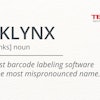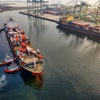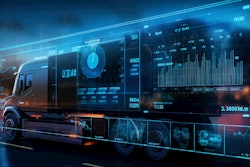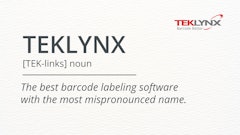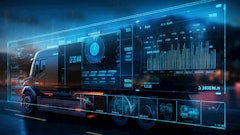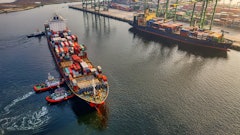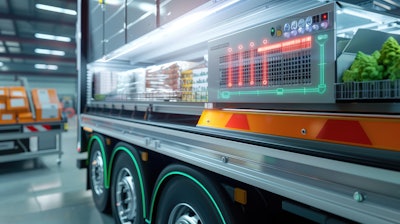
Nobel Laureate Robert Solow once observed, "You can see the computer age everywhere but in the productivity statistics." Food transportation and logistics executives should take note—the same paradox is playing out with AI across supply chains, distribution centers, and freight operations today.
The historical parallel is telling. When textile manufacturers first adopted electric motors in the early 1900s, they kept their old belt-and-shaft systems. This "dumb substitution" delivered modest improvements while core processes stayed the same. Only decades later, when factories redesigned their entire operations around electric power, did productivity double and triple.
North American food transportation companies are making the same mistake. Instead of rethinking how work gets done, many executives treat AI as a bolt-on, adding route optimization or demand forecasting to transportation management systems built for a different era. On the surface, the logic makes sense: established vendors promise quick wins, and IT teams prefer solutions that don't require major infrastructure changes.
But automating broken and outdated processes is anything but transformational: it compounds dysfunction. Companies are applying sophisticated AI technology to workflows designed for phone calls, paper logs, and systems from before smartphones existed.
Albeit surprising to maybe some, the result is actually predictable: AI delivers small improvements while missing the real opportunity for substantial gains. A recent MIT study found that of the $30-40 billion in investment in generative AI, 95% generated zero return on investment.
Transportation management systems (TMS) are the central nervous system of fleet operations, making the choice of AI technology critical. The demands of modern supply changes require that the TMS goes beyond the capabilities of most legacy platforms, which function only as digital filing cabinets—repositories of orders, routes, and schedules that reflect a paper-based past.
Food shippers and carriers, working in an environment where margins are thin and service failures are costly, are discovering that these systems no longer fit their everyday needs.
Typical enterprise fleet operations are a combination of digital inputs, manual spreadsheets, and printed information, which results in a patchwork of manual adjustments layered over digital tools. As new technologies are layered upon old, the resulting Frankenstein systems fail in the most fundamental input that AI needs: real-time data. As a result, they cannot handle operational complexities, accumulating inefficiencies in higher transportation costs, delayed deliveries, wasted miles, and out-of-stock items on customer store shelves. Adding AI on top of legacy systems is not only a fool’s errand, it’s likely to make things worse.
The food supply chain also adds layers of other requirements that magnify the weaknesses of their current systems. Shelf life, temperature control, strict delivery window considerations, and the high cost of stockouts leave little room for error.
For fleets moving perishables, every mile and minute matters. Yet, some companies have documented millions in added expenses and hundreds of thousands of missed delivery events per year— all despite having invested heavily in optimization software.
Rethinking your TMS
What’s emerging is that food carriers need management technology built to address today’s operations while easily adapting to new changes as they happen. This means rethinking the TMS so that data integration, optimization, and decision intelligence are woven directly into the system’s architecture and workflows, a tech-stack ready for AI.
The solution begins by discarding the idea of AI as an easy add-on to an existing TMS as we’ve known it for the last 30 years. Systems built for AI at their core start with a foundation designed for real-time data flows across ERP systems, fleet management platforms, telematics, payroll, and customer portals. This unified data environment ensures that every decision reflects the full operational picture, not fragmented snapshots.
Algorithms for routing, load planning, and demand forecasting are not new, but when bolted onto platforms that cannot take advantage of real-time data, they fail to deliver meaningful results. Instead of breakthroughs, fleets see incremental gains at best, but more often than not, failed pilots, and frustration. Put simply, trying to run modern AI on these foundations is like fitting a high-performance engine into a vehicle with cracked fuel lines. No matter how powerful the engine, the system cannot run as intended.
Once incorporated into the right modern tech-stack, new AI tools can bring adaptive decision-making power to food logistics operations, and here’s what it looks like:
First, an integrated real-time data layer becomes the connecting tissue for workflows from order intake, route planning, to driver orchestration, and financial processes. In a system where AI has the context it needs, relevant recommendations are made and adapted as conditions shift.
Second, an intelligence layer then adds adaptive optimization and decision support. When a refrigerated trailer breaks down with perishable goods, an AI-native TMS can instantly weigh alternate carriers, re-route cargo, assess temperature risks, and present ranked solutions. It doesn’t just alert operators— it helps them act.
Finally, at the top, the operational interface, designed not as a dashboard of static reports but as a real-time co-pilot for dispatchers and managers. Decisions are presented in real time, with AI continuously learning from human overrides and refining its recommendations. Over time, this reduces manual intervention while elevating the impact of human judgment.
Where true ROI lies
An AI-native TMS offers three crucial advantages to food carriers and shippers:
- Smarter, faster decisions: Real-time data ensures that dispatchers act on the latest conditions, reducing costly errors. For example, optimization can natively account for driver hours, vehicle maintenance schedules, or sudden weather disruptions without requiring manual reconciliation.
- Improved adoption and usability: When optimization lives within the dispatcher’s primary workspace— not as an external module— teams are more likely to use it consistently. Higher adoption translates directly into more reliable performance gains.
- Continuous learning: Unlike static algorithms, AI-native systems learn from human adjustments. If dispatchers repeatedly re-sequence certain stops due to on-the-ground realities, the system incorporates those insights, reducing the need for overrides and driving closer alignment between technology and operations.
For food shippers, these advantages can mean the difference between shelves stocked and recurring customer dissatisfaction. For carriers, it translates into lower operating costs, improved service levels, and stronger competitive positioning.
Invest in process transformation
But technology alone will not deliver transformation. Many organizations stumble not because of technical challenges, but because they fail to realize that the transformation requires the collective inputs and guidance from all affected departments to change business processes, and not just the deployment of software. Without this approach, the result is conservative adoption and incremental changes
Meaningful transitions are led from the top. Senior operations executives must boldly champion the strategy, secure resources, and empower cross-functional teams to drive implementation. Magic can happen when the most innovative providers work with people who deeply understand the business and operations. This leadership ensures that the shift is treated not as a technology upgrade, but as a core business transformation.
Unlocking the benefits
For fleets, the path forward usually unfolds in stages, replacing end-of-life ERP systems, upgrading telematics, or phasing out outdated TMS platforms. The key is maintaining momentum and recognizing that partial transformation will not unlock the full benefits that are available.
Companies that embrace the shift will benefit from lower costs, which allows them to win more business, strengthen service reliability, and have the flexibility to adapt to changing market conditions. Those who delay will find themselves competing against fleets with fundamentally better decision-making capabilities.
The shift to AI-native technology isn't just about better software—it's about building the resilience and intelligence required to thrive in the next decades of logistics. In food transportation, where small changes can make or break profitability and missed deliveries erode years of customer trust, these platforms will ultimately represent a competitive imperative.
The question is no longer whether AI will reshape transportation. It is whether food logistics companies will lead the transformation— or scramble to catch up.
